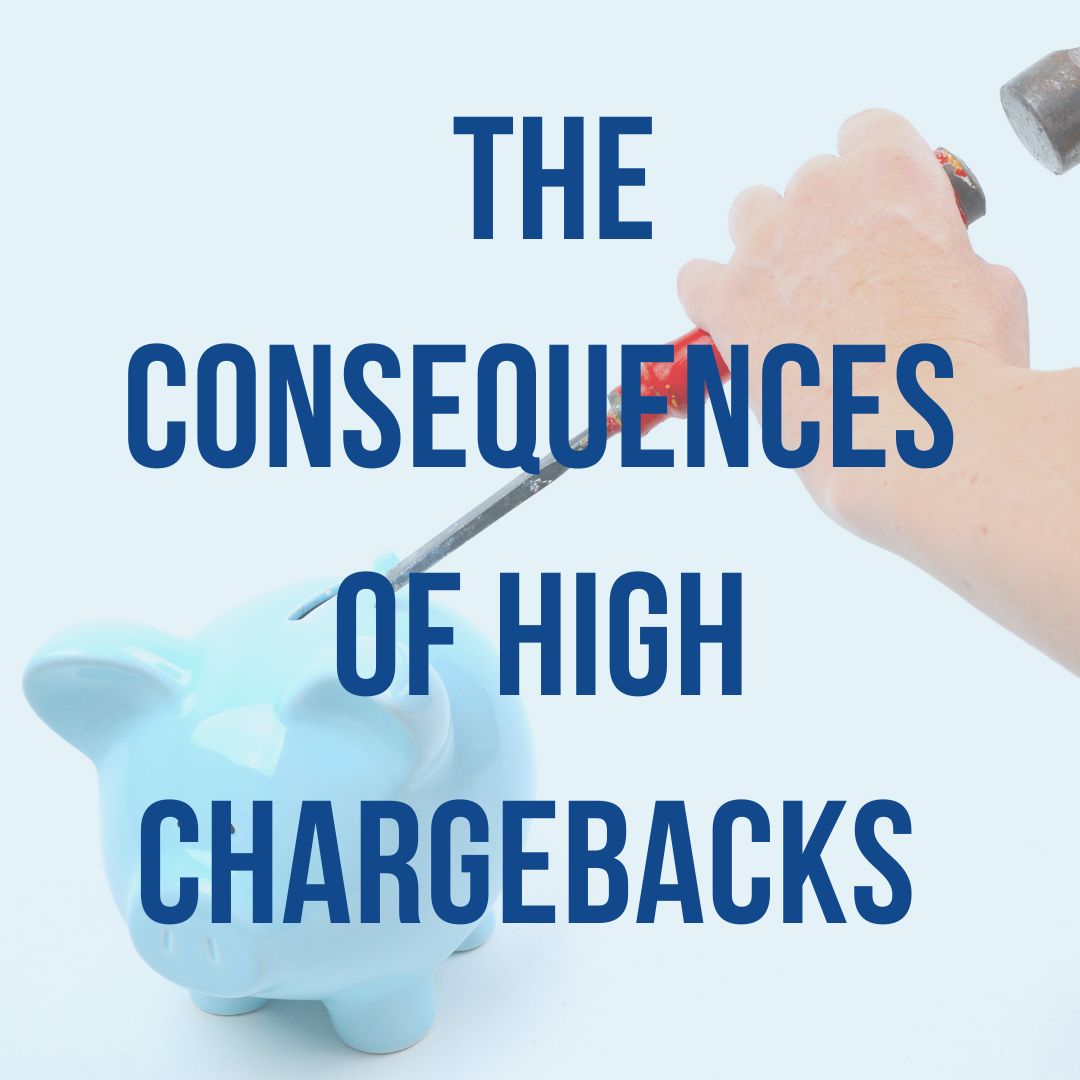 Merchants are bleeding profits from an elusive threat. And this threat is growing to organized crime ring proportions. Return and refund fraud is a crime where customers and/or fraudsters exploit a retailer’s policies to gain a refund or credit for other products when the return would otherwise not be eligible for a refund. And it is alive and well in these times of increased digital commerce.
Merchants are bleeding profits from an elusive threat. And this threat is growing to organized crime ring proportions. Return and refund fraud is a crime where customers and/or fraudsters exploit a retailer’s policies to gain a refund or credit for other products when the return would otherwise not be eligible for a refund. And it is alive and well in these times of increased digital commerce.
If merchants don't find ways to reduce refunding fraud, it's going to cost them billions. In fact, one recent study attributes $27 billion worth of losses to refund abuse.
The cost of refunding fraud is continuing to increase.
E-commerce sales have skyrocketed during the pandemic, with some reports touting an increase of 76% over the same time last year. And with the increase in sales, we’ve also seen an increase in returned items. Some of the increase is due to legitimate return scenarios. Consumers are staying away from brick-and-mortar and opting to buy more of their items online. But that means they’re buying without seeing, touching, and/or trying on the items. This has led to an understandable increase in returns as well.
But it has also further opened the door for return and refund fraud. In fact, another recent study by online fraud detection specialists, Forter, found that refund fraud costs business $24 billion a year. The study estimated that up to 20% of all merchant refunds were fraudulent refunds.
Businesses have also been operating on limited staff due to the pandemic. Shipping logistics are taxed because of more deliveries and fewer employees. These challenges create a prime environment for fraudsters looking to capitalize on the shortage and benefit from refund fraud.
Criminals are taking advantage of the whole situation, committing refund fraud at a greater level.
Return and refund fraud occur across all sales channels. The majority still occurs at in-store shopping, but online sales and buy online - pickup in-store (BOPIS) are also common.
There are many ways fraudsters commit refund/return fraud. There’s the age old “wardrobing” or “renting” of an item; the consumer wears the item, then returns it. Consumers may shoplift the item and bring it back at a later date for a no-receipt return. Another tactic includes buying an item and then returning to the store at a later date with the receipt from the prior purchase. The customer grabs another of the same item from the shelf and proceeds to the return desk as if they’re just bringing back the item. A bolder tactic involves taking an item from the shelf and walking straight up to the return desk to process a no-receipt return, all in the same visit.
Online refund fraud is even easier. All a customer has to do is claim that the item never arrived or that it arrived damaged. Many businesses do not ask for the damaged item to be returned. They don't even ask for proof of damage.
These are all examples of individual and opportunistic refund fraud. But a more organized refund scam ring is growing with society’s move towards greater eCommerce shopping.
Fraudsters have created a career out of completing bogus refunds for hire. Retail business owners need to understand how prevalent this refund fraud really is. This has gone way beyond individual cases of so-called friendly fraud. This is organized malicious crime.
Refunding fraud is an organized crime career for many fraudsters.%20(1).jpg?width=555&name=82070338_s%20(1)%20(1).jpg)
Opportunists have found a way to make a pretty significant living helping others get a refund from unsuspecting stores. They call themselves “refunders” and they offer their services to the public through websites, forums, social media platforms and chat rooms.
The refunders are experts at getting a store to process a refund. They learn the refund/return policies of all the major retail outlets and promise consumers a refund for a percentage of the money. It may seem unbelievable, but a good refunder can make upwards of $20,000 per month!
This is how it works:
First, a consumer buys a high-ticket item online. Then, they seek out a refunder to help them get a refund for the item. They will either claim that the item was never received or that it was damaged in shipping. The refunder will get them a refund and keep a portion as their fee. The customer gets to keep their item and reap the rewards.
These “refunders” are making it easy for people to get a hold of high-priced items for pennies on the dollar. After all, they don't have to make the call and lie to customer service.
Sure, there are customers who think it isn't really fraud. Like when a customer wears an expensive dress to an event and then returns it the next day. They may feel like it's actually pretty harmless. And after all, it is the merchant's policy to refund without asking for a receipt or return of product, not theirs. It is often a case of moral ambiguity.
But these types of refund fraud are premeditated malicious fraud. The product is purchased with the goal of getting a refund and getting the item for free or cheap. And it's costing retail companies billions.
Earlier we stated that up to 20% of refund requests are fraudulent. That means 1 out of 5 refunds is fraud! Merchants must find a way to deter refund fraud while still providing good customer service to their real customers.
In recent years, merchants have begun to take this type of fraud more seriously. A National Retail Security Survey found 53.6% of businesses reported that return fraud was “somewhat more” or “much more” of a priority in the last 5 years. But that was pre-COVID.
COVID-19 has had a direct and negative impact on return and refund fraud.
Claims for “Item Not Received” (INR) or “Did Not Receive” (DNR) have increased significantly this year. Think about it. More people are shopping and buying online than ever before. And they're doing it more often than ever before. Postal, shipping, and delivery services have been taxed and everyone is short staffed. It's the perfect storm.
This scenario has made it much easier for the “refunder” to convince the return department the item never showed up. Delayed and lost packages are happening all over the country for real.
Of course, retailers must keep their good customers in mind. Yes, there could be instances where the items truly were not received, or were received damaged. Not everyone looking for a refund is trying to commit fraud. The goal is to reduce the ease of refund fraud while still serving your real customers.
You can combat refund fraud while keeping good customers happy.
Having a customer-centric return and refund policy does not mean you have to tolerate refund fraud. There are a few ways you can tweak your Return and Refund Policy to deter fraud without upsetting customers. If you're clear about your return/refund policy in the beginning, customers know what to expect.
- Require the customer to present the sales receipt to complete a return if a refund is sought. If you require the item to be in new condition and in its original packaging, they won't balk. You set expectations from the beginning.
- Establish that refunds will be returned to the original form of payment. This will deter criminals from returning products purchased with stolen credit card information for cash.
- Do not give refunds for no-receipt returns. If the customer doesn’t have a receipt, they are only given store credit or store gift card. Now this won't necessarily stop fraudsters, after all they can just sell the gift card for cash. But it will deter the frequency as it adds another layer of effort for the fraudster.
- Merchants can also invest in programs such as refund history tracking software. Not only do merchants need to track the reasons for a refund request, but they must also track who is doing the requesting. Require customers to show identification when processing a return or refund. Having to show ID will help to deter repeat offenders. And if you can identify serial returners, you can dive deeper to determine if fraud is involved.
- Most of the time, companies only note that an item was not received (INR) or the customer did not receive (DNR). Expand your refund “reasons” or “reason codes” and track all of your refund requests. Instead of just using INR or DNR, expand to note whether the tracking can be confirmed.
- Do the delivery partners notify you that the item was delivered? Or is there no confirmation from the delivery partner?Tracking this type of information can help detect patterns and anomalies. It will also allow merchants to identify repeat or serial offenders.
.jpg?width=587&name=142635140_s%20(1).jpg)
Fighting fraud and servicing customers is a delicate balance.
Beware of implementing a too strict return and refund policy. It could backfire on you. It could lead to increased shopping cart abandonment, or worse, increase your chargeback ratio.
Shopping cart abandonment statistics show that a strict return policy can contribute to shopping cart abandonment. If a customer feels the return policy is too strict, it could keep them from buying in the first place. It's also the main reason consumers turn to filing a chargeback with their credit card issuer.
Even more costly than cart abandonment is chargebacks and chargeback fraud.
Card holders know that they can turn to the chargeback process to get their money back for a product they don't like. This is often referred to as “friendly fraud”. When a dispute is filed, the money is pulled from the merchant's account and returned to the cardholder. The Merchant is also charged a chargeback fee.
The merchant loses the merchandise, the revenue for the product, and pays fees.
Even if the merchant fights the dispute and wins, they still lose the chargeback fee in addition to all the costs of fighting the dispute. And to top it off, the chargeback still goes on your record. For the merchant, a high incidence of chargebacks not only costs money, it could get your merchant account shut down.
What role do credit card brands have in fighting refunding fraud, if any?
All of this talk of refund fraud and chargebacks brings to mind the heavy hitters of the card brand industry. Do companies like Visa, MasterCard, and American Express have any obligation to get in the game?
It seems like the card brands are in the best position to monitor refund fraud at a consumer level. A consumer committing refund fraud will spread their purchases across multiple merchants. It would be hard for a merchant to know if they’re a repeat offender. But the card brand would be able to see if there were a pattern of charges followed by refunds. That’s assuming the fraudster uses credit cards for the original purchase. And that the cards belong to them.
Merchants get penalized if they have a high incidence of chargebacks. They are also dinged if they have a greater than normal amount of refunds processed on their merchant account. But card brands do nothing to monitor their own cardholders.
Refund fraud is very difficult to detect, especially without upsetting a merchant’s loyal customers. For now, it's up to merchants to find ways to reduce and protect themselves from this threat. A thoughtfully crafted Refund and Return Policy is an easy place to begin.
Merchants that feel they may be a victim of larger scale refund fraud may want to consider refund tracking technologies.
Merchants can reduce refunding fraud while still serving their good customers.
It's a delicate balance trying to provide excellent customer service without opening the door to refund fraud. Businesses must find a way to please good customers. But they must also implement strategies that cause extra friction for would-be fraudsters.
We're here to support our merchant client’s success in any way we can. We know that fraud of all types costs merchants greatly. Chargebacks also cost merchants, in many ways. We have solutions to help minimize these problems. Fraud prevention software and chargeback management solutions all work to help merchants keep these threats at a manageable level.
Refund fraud is harder to detect. The only way to differentiate between fraud and a real refund is through detecting patterns and anomalies. Merchants can only do that if they implement tracking software and tap into data analytics.
At MonerePay, our goal isn't just to earn your business, it's to help you thrive. And through that support, develop a long-standing business relationship. We have the payment gateway software merchants need to manage these types of challenges in a meaningful way. Whether you need fraud prevention, chargeback management, or business intelligence software, or all three.
We believe that you deserve more out of your merchant services and we strive to exceed your expectations. But if we can help, we will. Talk to one of our ETA Certified Payments Professionals. If we don’t have a solution to fit your needs, we’ll recommend one for you.

(1).jpg)
%20(1).jpg?width=593&name=44228504_s%20(1)%20(1).jpg)



